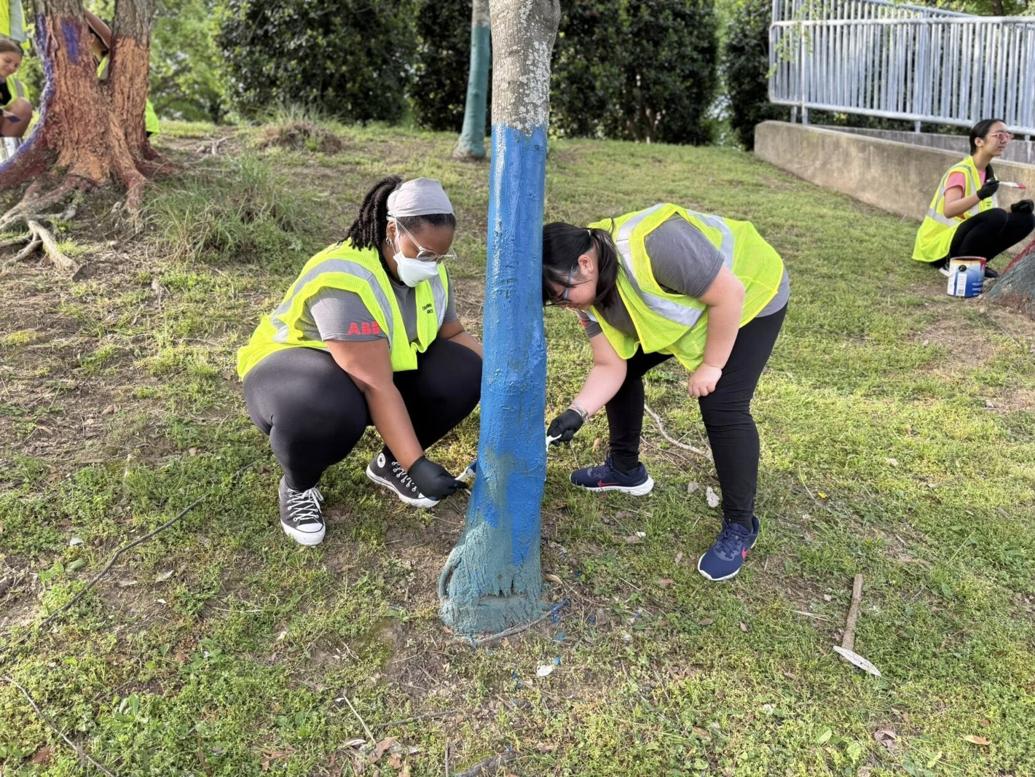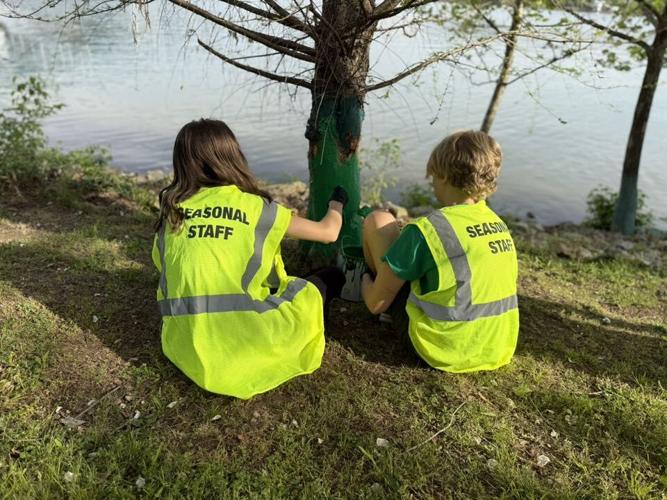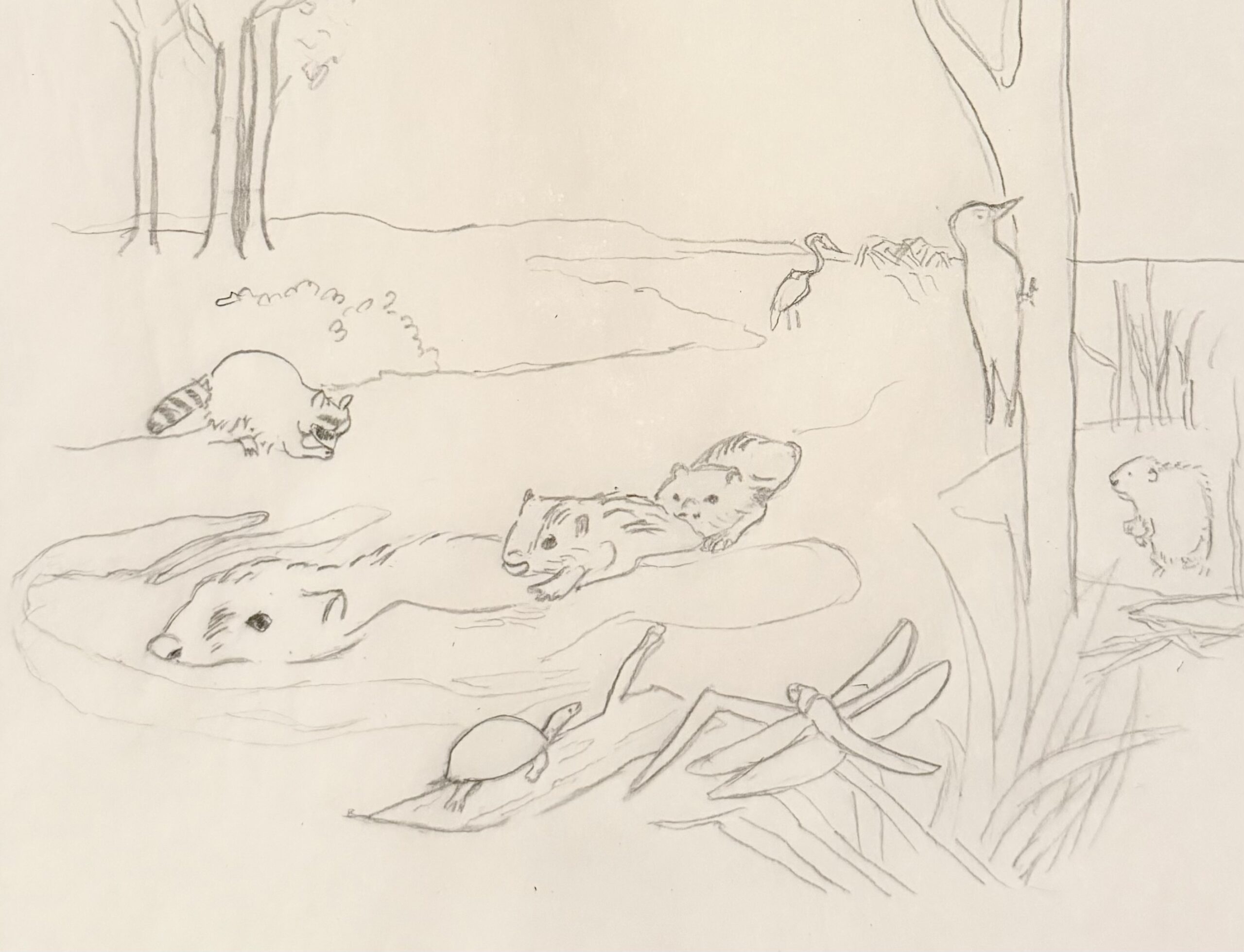I’m having an exciiting keyboard morning at the moment so I’m going to entertain you with a charming beaver meet and greet for the time being.
Good news for Tennessee beavers?
CCA students paint riverfront trees to deter beavers
 Students from the Chattanooga High School Center for Creative Arts (CCA) are kicking off Earth Week in a very colorful way.
Students from the Chattanooga High School Center for Creative Arts (CCA) are kicking off Earth Week in a very colorful way.
The students painted trees along the riverfront to keep beavers from cutting down trees and dragging bark across the river.

Very happy about the sand paint and the students. Not sure about the pepper flakes but okay,
Yeah”
You’ll be happy to know that the Beaver Bill passed the house and is on its way to the senate:
Oregon House passes bill encouraging beavers to fix impaired waterways
PORTLAND, Ore. (KOIN) – What do Oregonians do when they want to fix up their waterways without spending a dime? They send in the beavers.
On Monday, the Oregon House voted to close all recreational and commercial beaver trappings near the state’s impaired waterways in an effort to encourage their spread. These animals have a natural instinct to dam up creeks and streams — effectively encouraging water to stay where it’s meant to be.
Okay so technical the bill wasn’t about the beavers it was about the trappers. But that works for me.
The goal of HB 3932 is to allow these animals to “perform their ecological functions” on the more than 100,000 miles of waterways in Oregon that are considered impaired.
“This legislation gives us an opportunity to try a low-tech, low-risk, and free strategy to address impaired waterways by encouraging beavers to return to Oregon landscapes. The science says this can work, and we’re willing to give it a try,” said Rep. Pam Marsh of Southern Jackson County.
The Oregon Department of Environmental Quality determines a waterway’s designation by using the following criteria: temperature, sedimentation, level of dissolved oxygen, and health of invertebrates.
Great. So Now what?
Beaver dams can help by slowing water to help pollutants settle out and adjusting the landscape to aid groundwater, prevent wildfires, and create habitats for other members of the local ecosystem.
“By protecting beavers where they do the most good, we’re investing in natural solutions that support clean water, healthy forests, and more resilient communities,” said Rep. Emerson Levy of Central Oregon. “This bill is a practical step forward that honors the stewardship of our shared public lands.”
However, a recent report by the Oregon Department of Fish and Wildlife found that most recreational trapping in Oregon takes place on private lands. That means only 4% of harvests will be stopped by HB 3932.
HB 3932 is now headed to the Oregon Senate
Alright team beaver! You are well on your way! Lets hope the senate is as smart as the house!
An interesting update from Ken Tape, the researcher from Alaska who has been studying the way that beavers speed up climate change in the artic. He’s gotten a little more beaver friendly over the years but still snickers to see that bears and wolves eat beavers. Who knew?

Beavers are colonizing the Bering Strait region and heading northwards. By targeting tundra streams and creating ponds, beavers help thaw the permafrost of tundra lowlands. Ken will discuss the research and the ecosystem-wide impacts these natural engineers are having on northern and western Alaska.






































